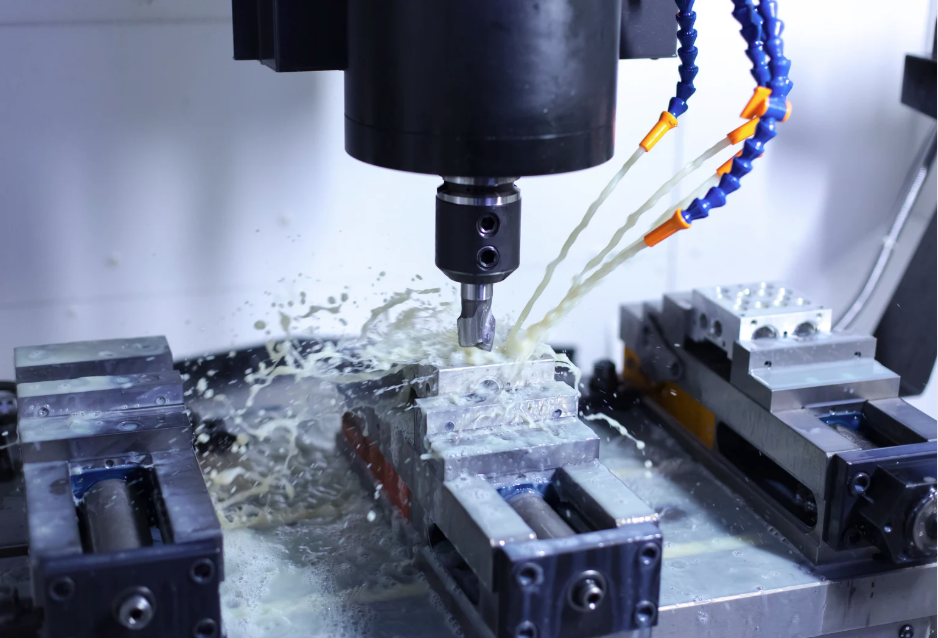
Known for its light weight and high strength, GFRP is a material used in a wide range of fields.
When you are considering manufacturing parts or products using GFRP, you may ask yourself, "What are the processing methods of GFRP?" How do I choose a supplier for GFRP microfabrication?" You may have questions such as "What are the processing methods of GFRP?
In this article, we will explain how to microfabricate GFRP and how to select a supplier, along with GFRP features, advantages, applications, and product examples.
Receive technical proposals at TaigaTable of Contents
What is GFRP?
GFRP is a glass fiber reinforced plastic made of glass resin solidified with epoxy resin and polyester resin, phenol resin, vinylester resin, etc.
A type of FRP (Fiber Reinforced Plastic), it is an inexpensive and readily available material among FRPs.
Features and advantages of GFRP
GFRP has the following advantages
- Light (specific gravity is one-fourth that of iron)
- High strength (10 times higher than steel)
- High specific modulus of elasticity (7 times higher than iron)
- X-ray permeable.
- Conductive.
- High heat resistance
- High weather resistance
- Low thermal expansion
- Low cost as material
GFRP is a material that combines lightness with the same level of strength, weather resistance, and heat resistance as metal.
It also has X-ray permeability and conductivity, making it suitable for a wide range of applications.
Main applications and product examples of GFRP
Due to its properties, GFRP is utilized in the following applications and products.
- Automotive
- railroad vehicle
- ship
- Aircraft parts
- Hulls of small vessels
- Housing equipment (bathtubs, etc.)
- Sports equipment (golf club shafts, tennis rackets, ski boards, fishing rods, surfboards, etc.)
- Public equipment (park playground equipment, benches, etc.)
- Telecommunications (radar domes, communication antennas)
- Construction (elevated and underground water tanks)
- refrigerator truck
- Cold storage containers
- MRI/CT Coverage
- Printing Field (Printed Circuit Boards)

FRP materials other than GFRP
In addition to GFRP, the following types of FRP materials are available. Keep in mind the characteristics of each.
| type | feature |
| CFRP (Carbon Fiber Reinforced Plastic) | Composite material using carbon fiber as a reinforcement material and resin as a matrix material. |
| CFRTP (Carbon Fiber Reinforced Thermoplastic) | Composite material with carbon fiber as reinforcement and thermoplastic as matrix material; softens when heated and hardens when cooled, allowing reuse; high strength, stiffness, and impact resistance; easy to mold |
| AFRP (Aramid Fiber Reinforced Plastic) | Aramid fiber is used as a reinforcement material and resin as a matrix material to make composite materials. |
| DFRP (Dyneema Fiber Reinforced Plastic) | Composite material with Dyneema fiber as reinforcement and resin as matrix material. |
| ZFRP (Zylon Fiber Reinforced Plastic) | Composite material with Zylon fiber as reinforcement and resin as matrix material, high strength, flame retardant |
| BFRP (Boron Fiber Reinforced Plastic) | Composite material with boron fiber as reinforcement and resin as matrix material; excellent strength and bullet resistance |
What is Microfabrication?
One of the processing methods of GFRP is microfabrication. Microfabrication is a method of applying fine processing, generally on the order of microns.
Advantages of Microfabrication
Microfabrication offers the following advantages
- High-precision machining is realized.
- Increased processing efficiency
- Cost savings
- Effective for product miniaturization and weight reduction
Micromachining, which is processing at the micron level, can achieve high-precision machining at a level that cannot be seen with the naked eye.
For this reason, they are widely used in fields that require dimensional accuracy, such as medical equipment and precision instruments.
In addition, by combining various microfabrication techniques, we can efficiently manufacture high-precision products.
If microfabrication improves product quality, it can also reduce costs by reducing material waste and defective products.
It is also effective as a processing method when the objective is to reduce the size or weight of a product, since it can also realize the processing of fine and lightweight parts.
GFRP microfabrication method
Specific processing methods in microfabrication of GFRP will be explained.
Microfabrication by cutting
This method uses tools with sharp cutting edges and durability and a processing machine to perform microfabrication while cutting the material.
While it can form 3D shapes and high-precision shapes, it has the disadvantage of being prone to burrs and chips.

Micro machining by machining
This is a machining method that uses a machine tool for microfabrication called a machining center.
Machining centers house multiple cutting tools that can perform a wide range of machining operations such as milling and drilling.
Laser microfabrication
Laser processing is a method of microfabrication by applying a small, focused laser beam to a material to melt or remove it.
It can be curved, cut, and drilled.
A wide range of materials can be handled, and different types of laser beams can be used for different applications.
Microfabrication by electric discharge machine
This is a method of machining such as shape-sinking EDM and wire EDM, in which electric discharge is generated between the electrode and the material, melting the material with heat.
It is used for materials that are prone to distortion and deformation during cutting and grinding processes.
Hard materials can be processed if they are electrically conductive, but since the accuracy of the processed surface is lower, finishing processes such as polishing are often required.
What is required in GFRP microfabrication
This section explains the equipment and measures required for microfabrication of GFRP.
High-precision processing machine
The most important point for successful microfabrication of GFRP is to have a processing machine that can achieve high-precision microfabrication.
Specifically, CNC machines with high control precision and laser processing machines that can achieve fine processing fall into this category.
Since the machine can process materials down to a few microns, it is possible to manufacture parts with complex shapes and fine details.
Stable temperature control
GFRP has the property of expanding or contracting due to temperature changes in the environment in which it is processed.
Thorough temperature control is necessary because material deformation caused by temperature changes in the processing environment may reduce processing accuracy.
Vibration countermeasures during processing
Since microfabrication is performed in microns, vibration may affect the quality of the fabrication, for example, by causing dimensional shifts.
To suppress vibration from machine tools and the surrounding environment, it is necessary to take measures such as using anti-vibration mats and machine tools designed to absorb vibration, and eliminating sources of vibration.
Quality control with high-precision measuring instruments
High-precision measuring instruments are essential for checking the accuracy and quality assurance of processed GFRP parts and products.
Specifically, 3D measuring machines, laser scanners, microscopes, etc. fall under this category.
This is useful in terms of product quality assurance, as the dimensions and shape of machined GFRP parts can be measured with high precision.
How to choose a contractor for GFRP microfabrication
Important points to consider when selecting a contractor for GFRP microfabrication are ISO 9001 certification and selection of a contractor with excellent tooling facilities.
ISO 9001 certification is a standard that certifies that a company is capable of consistently providing products and services that meet regulatory requirements to meet customer needs.
An ISO 9001-certified supplier will be able to achieve quality GFRP microfabrication.
In addition, microfabrication often involves the use of special processing machines.
Therefore, if the facilities are well equipped, there will be a wide range of processing methods that can be handled.
With GFRP microfabrication, you will also receive better proposals and flexibility.
Summary
The microfabrication of GFRP was explained along with its features and advantages.
GFRP microfabrication can be used to achieve high dimensional accuracy, but it is important to choose a supplier with high technology and reliable quality assurance.
If you are considering manufacturing parts by microfabrication of GFRP, please contact us.Taiga."Please make use of the following
Taiga is a free service that allows you to consult with experienced contractors.
We can efficiently proceed with the development of difficult or new parts, small-lot production, prototyping, and mass production while keeping costs low.
Receive technical proposals at Taiga
 0120-987-742
0120-987-742

